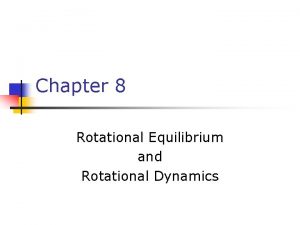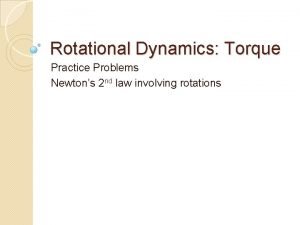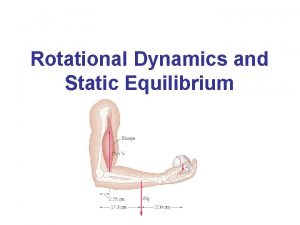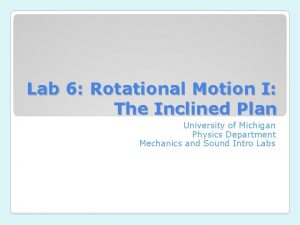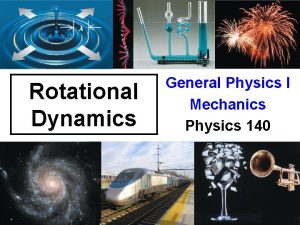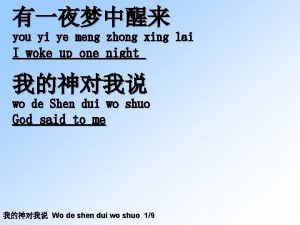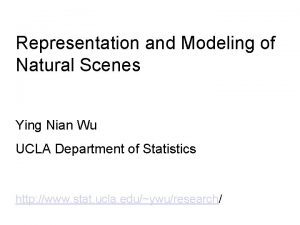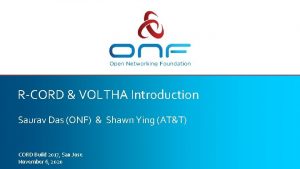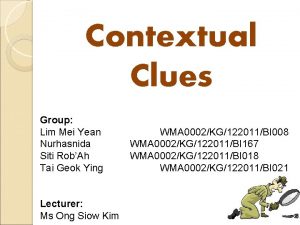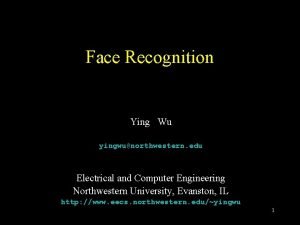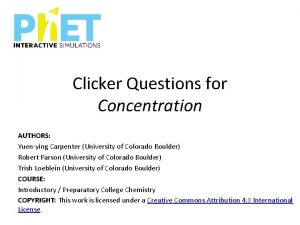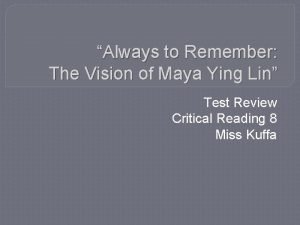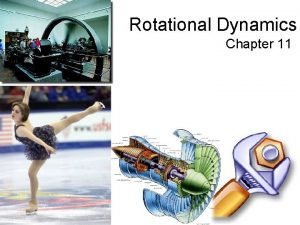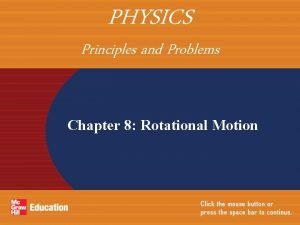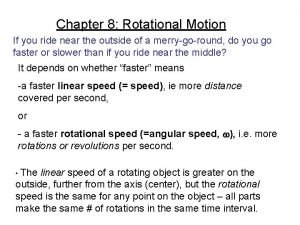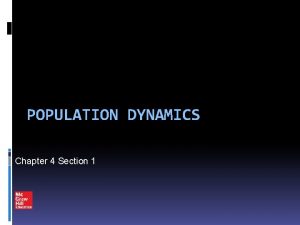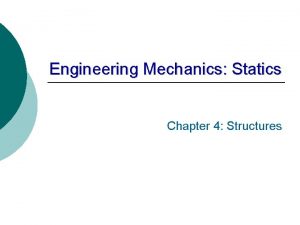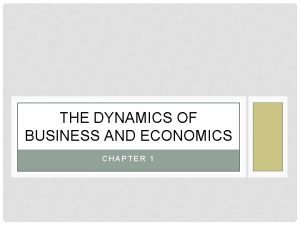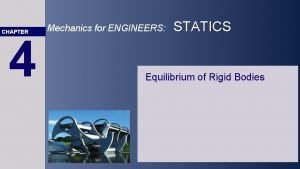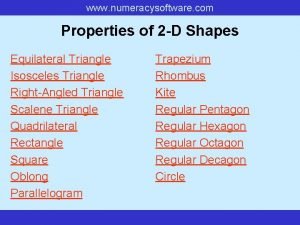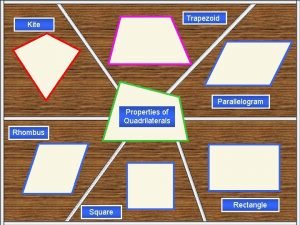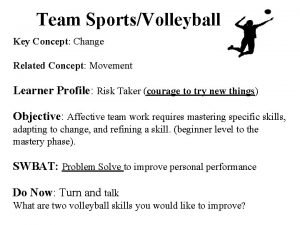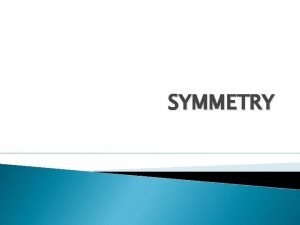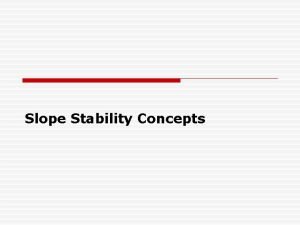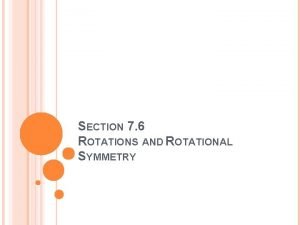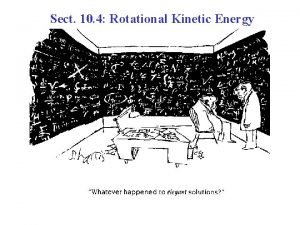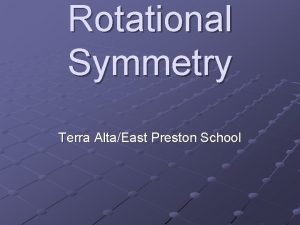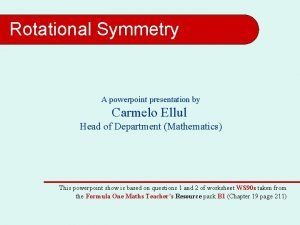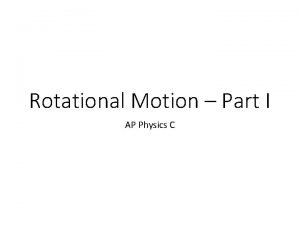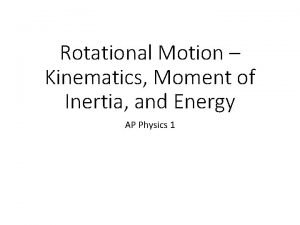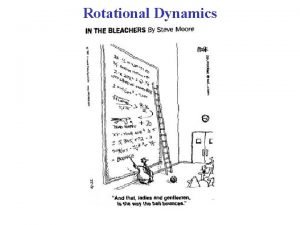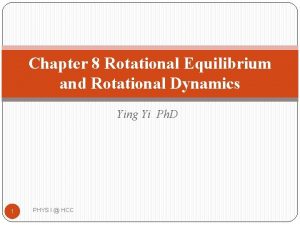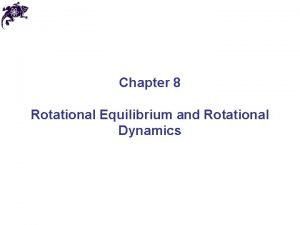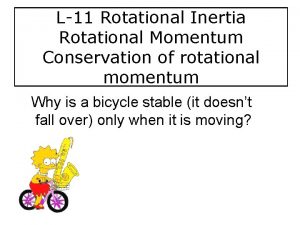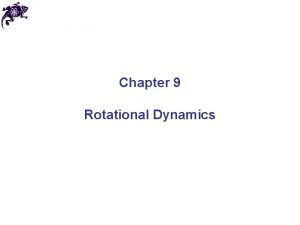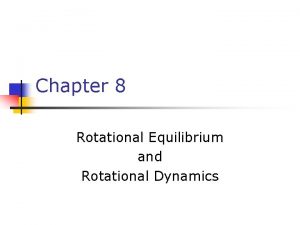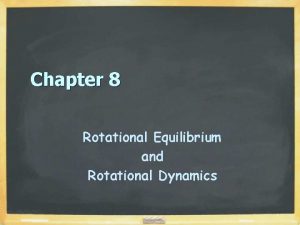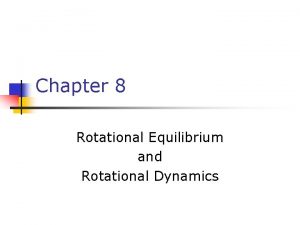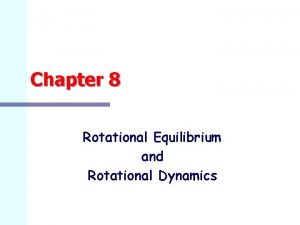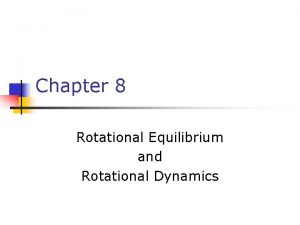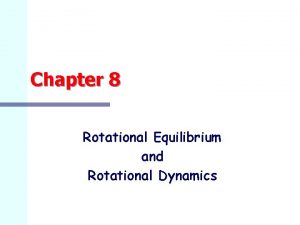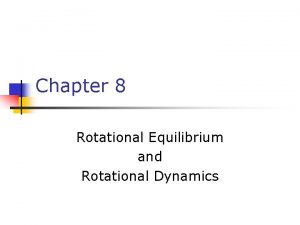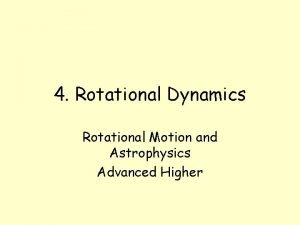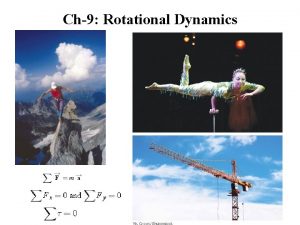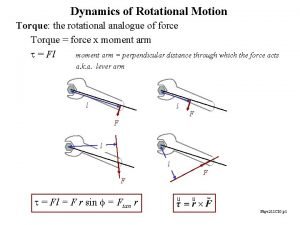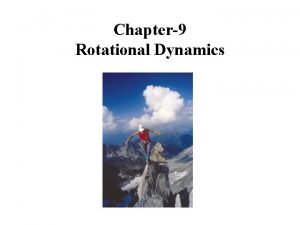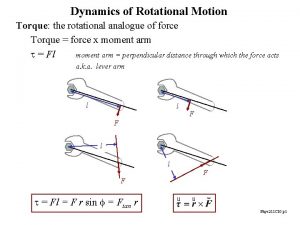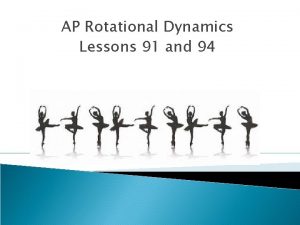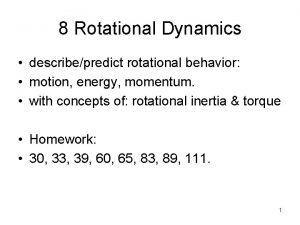Chapter 9 Rotational Dynamics Ying Yi Ph D





































- Slides: 37

Chapter 9 Rotational Dynamics Ying Yi Ph. D 1 PHYS I @ HCC

Outline �Torque �Center of Gravity �Two conditions for equilibrium �Newton’s second law for rotational motion 2 PHYS I @ HCC

Torque �There are three factors that determine the effectiveness of the force in opening the door: �The magnitude of the force �The position of the application of the force �The angle at which the force is applied 3 PHYS I @ HCC

Definition of Torque � 4 PHYS I @ HCC

Lever Arm � 5 PHYS I @ HCC

Torque and Axis �The value of the torque depends on the chosen axis of rotation �Torques can be computed around any axis �There doesn’t have to be a physical rotation axis present �Once a point is chosen, it must be used consistently throughout a given problem 6 PHYS I @ HCC

Multiple Torques �When two or more torques are acting on an object, the torques are added �As vectors �If the net torque is zero, the object’s rate of rotation doesn’t change 7 PHYS I @ HCC

Example 9. 1 Torques � 8 PHYS I @ HCC

Group Problem: Battle of the revolving Door Two disgruntled businesspeople are trying to use a revolving door, as in Figure 8. 3. The woman on the left exerts a force of 625 N perpendicular to the door and 1. 20 m from the hub’s center, while the man on the right exerts a force of 8. 5× 102 N perpendicular to the door and 0. 800 m from the hub’s center. Find the net torque on the revolving door. 9 PHYS I @ HCC

Example: The swinging door (a) A man applies a force of F=3. 00× 102 N at an angle of 60. 0º to the door of Figure, 2. 00 m from the hinges. Find the torque on the door, choosing the position of the hinges as the axis of rotation. (b) suppose a wedge is placed 1. 50 m from the hinges on the other side of the door. What minimum force must the wedge exert so that the force applied in part (a) won’t open the door? 10 PHYS I @ HCC

Center of Gravity �The force of gravity acting on an object must be considered �Definition of center of Gravity: The center of gravity of a rigid body is the point at which its weight can be considered to act when the torque due to the weight is being calculated. 11 PHYS I @ HCC

Calculating the Center of Gravity 12 PHYS I @ HCC

Coordinates of the Center of Gravity �The coordinates of the center of gravity can be found from the sum of the torques acting on the individual particles being set equal to the torque produced by the weight of the object 13 PHYS I @ HCC

Center of Gravity of a Uniform Object �The center of gravity of a homogenous, symmetric body must lie on the axis of symmetry �Often, the center of gravity of such an object is the geometric center of the object 14 PHYS I @ HCC

In class experiment: Center of gravity 15 PHYS I @ HCC

Experimentally Determining the Center of Gravity � The wrench is hung freely from two different pivots � The intersection of the lines indicates the center of gravity � A rigid object can be balanced by a single force equal in magnitude to its weight as long as the force is acting upward through the object’s center of gravity 16 PHYS I @ HCC

Example 9. 6 Center of Gravity � 17 PHYS I @ HCC

Torque and Equilibrium �First Condition of Equilibrium �The net external force must be zero �This is a necessary, but not sufficient, condition to ensure that an object is in complete mechanical equilibrium �This is a statement of translational equilibrium 18 PHYS I @ HCC

Torque and Equilibrium, cont �To ensure mechanical equilibrium, you need to ensure rotational equilibrium as well as translational �The Second Condition of Equilibrium states �The net external torque must be zero 19 PHYS I @ HCC

Selecting an Axis �The value of depends on the axis of rotation �You can choose any location for calculating torques �It’s usually best to choose an axis that will make at least one torque equal to zero �This will simplify the torque equation 20 PHYS I @ HCC

Example 9. 5 bodybuilding � 21 PHYS I @ HCC

Group Problem: Balancing act A woman of mass m=55. 0 kg sits on the left end of a seesaw a plank of length L=4. 00 m, pivoted in the middle as in figure 8. 8. (a) First compute the torques on the seesaw about an axis that passes through the pivot point. Where should a man of mass M=75. 0 kg sit if the system (seesaw plus man and woman) is to be balanced? (b) Find the normal force exerted by the pivot if the plank has a mass of mpl=12. 0 kg. (c) repeat part (a), but this time compute the torques about an axis through the left end of the plank. 22 PHYS I @ HCC

Notes About Equilibrium �A zero net torque does not mean the absence of rotational motion �An object that rotates at uniform angular velocity can be under the influence of a zero net torque �This is analogous to the translational situation where a zero net force does not mean the object is not in motion 23 PHYS I @ HCC

Solving Equilibrium Problems �Diagram the system �Include coordinates and choose a rotation axis �Isolate the object being analyzed and draw a free body diagram showing all the external forces acting on the object �For systems containing more than one object, draw a separate free body diagram for each object 24 PHYS I @ HCC

Problem Solving, cont. �Apply the Second Condition of Equilibrium �This will yield a single equation, often with one unknown which can be solved immediately �Apply the First Condition of Equilibrium �This will give you two more equations �Solve the resulting simultaneous equations for all of the unknowns �Solving by substitution is generally easiest 25 PHYS I @ HCC

Group Problem: Walking a horizontal beam A uniform horizontal beam 5. 00 m long and weighing 3. 00× 102 N is attached to a wall by a pin connection that allows the beam to rotate. Its far end is supported by a cable that makes an angle of 53. 0º with the horizontal. If a person weighing 6. 00× 102 N stands 1. 50 m from the wall, find the magnitude of the tension T in the cable and the force R exerted by the wall on the beam. 26 PHYS I @ HCC

Torque and Angular Acceleration �When a rigid object is subject to a net torque (Στ ≠ 0), it undergoes an angular acceleration �The angular acceleration is directly proportional to the net torque Moment of Inertia I 27 PHYS I @ HCC

Moment of Inertia �The angular acceleration is inversely proportional to the analogy of the mass in a rotating system �This mass analog is called the moment of inertia, I, of the object �SI units are kg m 2 28 PHYS I @ HCC

Newton’s Second Law for a Rotating Object �The angular acceleration is directly proportional to the net torque �The angular acceleration is inversely proportional to the moment of inertia of the object 29 PHYS I @ HCC

More About Moment of Inertia �There is a major difference between moment of inertia and mass: the moment of inertia depends on the quantity of matter and its distribution in the rigid object �The moment of inertia also depends upon the location of the axis of rotation 30 PHYS I @ HCC

Moment of Inertia of a Uniform Ring �Imagine the hoop is divided into a number of small segments, m 1 … �These segments are equidistant from the axis 31 PHYS I @ HCC

Other Moments of Inertia 32 PHYS I @ HCC

Example 9. 10 Torque of an Electric saw motor The motor in an electric saw brings the circular blade from rest up to the rated angular velocity of 80. 0 rev/s in 240. 0 rev. One type of blade has a moment of inertia of 1. 41× 10 -3 kg • m 2. What net torque must the motor apply to the blade? 33 PHYS I @ HCC

Angular momentum 34 PHYS I @ HCC

Application 1: figure skating 35 PHYS I @ HCC

Application 2: Figure Diving 36 PHYS I @ HCC

Homework 3, 9, 13, 15, 23, 25, 29 37 PHYS I @ HCC
 Torque free body diagram
Torque free body diagram Rotational equilibrium and rotational dynamics
Rotational equilibrium and rotational dynamics Rotational dynamics practice problems
Rotational dynamics practice problems Rotational dynamics and static equilibrium
Rotational dynamics and static equilibrium Rotational motion lab
Rotational motion lab Dynamics
Dynamics Lai ba ying ye zhong
Lai ba ying ye zhong Dr ying wu
Dr ying wu Ying nian wu
Ying nian wu Hidespon
Hidespon Lim mei ying
Lim mei ying Ying wu northwestern
Ying wu northwestern Yuen ying carpenter
Yuen ying carpenter Maya lin
Maya lin Chapter 11 rotational equilibrium
Chapter 11 rotational equilibrium Chapter 8 rotational motion answer key
Chapter 8 rotational motion answer key Chapter 8 rotational motion
Chapter 8 rotational motion Chapter 4 section 1 population dynamics
Chapter 4 section 1 population dynamics Chapter 4 cultural dynamics in assessing global markets
Chapter 4 cultural dynamics in assessing global markets Competitive dynamics examples
Competitive dynamics examples Chapter 4 section 1 population dynamics study guide
Chapter 4 section 1 population dynamics study guide Chapter 4 section 1 population dynamics study guide
Chapter 4 section 1 population dynamics study guide Chapter 4 section 1 population dynamics answer key
Chapter 4 section 1 population dynamics answer key Engineering mechanics: dynamics chapter 4
Engineering mechanics: dynamics chapter 4 Chapter 1 the dynamics of business and economics
Chapter 1 the dynamics of business and economics Chapter 1 the dynamics of business and economics
Chapter 1 the dynamics of business and economics Statics
Statics Oblong vs rectangle
Oblong vs rectangle Rhombus parallelogram trapezoid
Rhombus parallelogram trapezoid Referee hand signals in volleyball
Referee hand signals in volleyball Planes of symmetry
Planes of symmetry Rotational slump
Rotational slump Clockwise rotation
Clockwise rotation Hoop inertia
Hoop inertia Rotational symmetry of rectangle
Rotational symmetry of rectangle Symmetry ppt download
Symmetry ppt download Ap physics c rotational motion
Ap physics c rotational motion Kinetic rotational energy formula
Kinetic rotational energy formula
